

Tudor Prince Submariner saga: the power of an icon
Tudor has been revisiting its past for a while with timepieces inspired from those that have contributed to writing some of the finest chapters of its history.
Among those timepieces is the Black Bay. This particular watch represents best the legacy of all robust and efficient diving watches that have contributed to the worldwide recognition of the company; a company whose potential deserves to be put back in the spotlight. The brand was founded on February 17, 1926 by the maison “Veuve de Philippe Hüther” on behalf of Hans Wildorf and under the name “The Tudor”. However, its actual production only started in 1946. The brand understood immediately that it had to strike the right balance between the Rose and the Shield to meet the requirements of modern-day knights looking for products that would support them in carrying out their favorite activities.
Tudor was very much aware that it had to cater for the needs of young customers who were looking to broaden their horizons. Hence, in 1954, the brand launched a model that was likely to appeal to young adults who wanted to live adventures that helped them forget about the throes of war.
There was a model for every price range and thus the collection was competitive with other brands which were likely to gain the market shares of the sector. At the time, mountaineering was one of the most popular sports and Sir Edmond Hilary from New Zealand and the Frenchman Gaston Rébuffat were among its leading figures. Water sports were also very popular thanks to Jacques-Yves Cousteau who, together with Emile Gagnan, invented the pressure relief valve and thus made considerable progress in diving.
Holding tricks up their sleeve
Tudor was thus a step ahead in diving, one of the many activities young people favored, as it had a trump card up its sleeve. Indeed, the brand had at its disposal the expertise of Rolex – the parent company – in waterproofing thanks to the 1927-patented screwed crown on a tube. The 1954 model, known as Ref. 7922, was thus equipped with the revolutionary crown that made the case water resistant to 100 meters (330 ft). The watch was driven by a self-winding mechanical caliber that had been developed from a Fleurier movement-blank oscillating at 18,000 vibrations per hour. It was also equipped with a thick sheet of Plexiglas, a graduated 5-on-5 and bi-directional turning bezel and a “riveted” strap (Ref. 6636).
For the record, instead of the famous “Snowflakes” hands, this model was equipped with simple baton hands filled with a luminescent material.
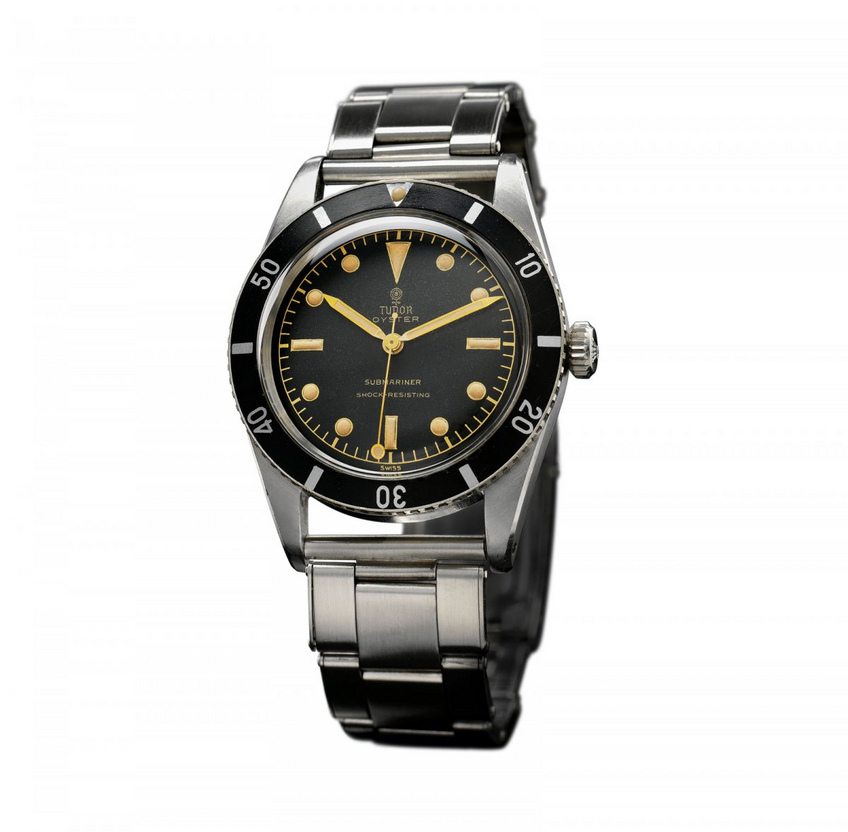
The first changes: from 1957 to 1960
The following year, the brand produced a more original version of the watch. Named Ref. 7923, it was equipped with a hand-wound caliber and was slightly bigger. However, in 1957, Ref. 7922 was reinterpreted with a bezel that was minute graduated on the first fifteen minutes and that featured “Mercedes” hands. In 1958, the piece was given the reference 7924 and named Tudor Oyster Prince Submariner Big Crown. At the time, its 8-mm crown was driven by the same caliber but was equipped with a slightly thicker 37-mm case whilst also being water resistant to 200 meters (660 ft). It also featured a distinctively thicker and more cambered sheet of Plexiglas that made it more resistant. As a whole, the watch was efficient and readable and was available with a riveted steel strap.
In any case, the Tudor Oyster Prince Submariner was substantially modified in 1959 and was given the reference 7928.
The model’s design was modified to embed a strong crown guard that protruded from the side of the middle and protected the winding crown from potential shocks that could damage its waterproofing. At the time, the lugs were angular and square-shaped and the 6-mm crown together with the 39-mm case gave the piece a more modern and masculine look. Water-resistant to 200 meters, this watch was equipped with the famous caliber 390 that is today rare to find. The Tudor product was then finished and was thus only slightly modified from then on; in 1961, the crown guard was sharpened; in 1963, silver instead of gold inscriptions were used and until 1969, it featured the Tudor Rose logo. In 1964, the crown guards of the Prince Submariner models were given the shape which remained until the start of the 1990s.
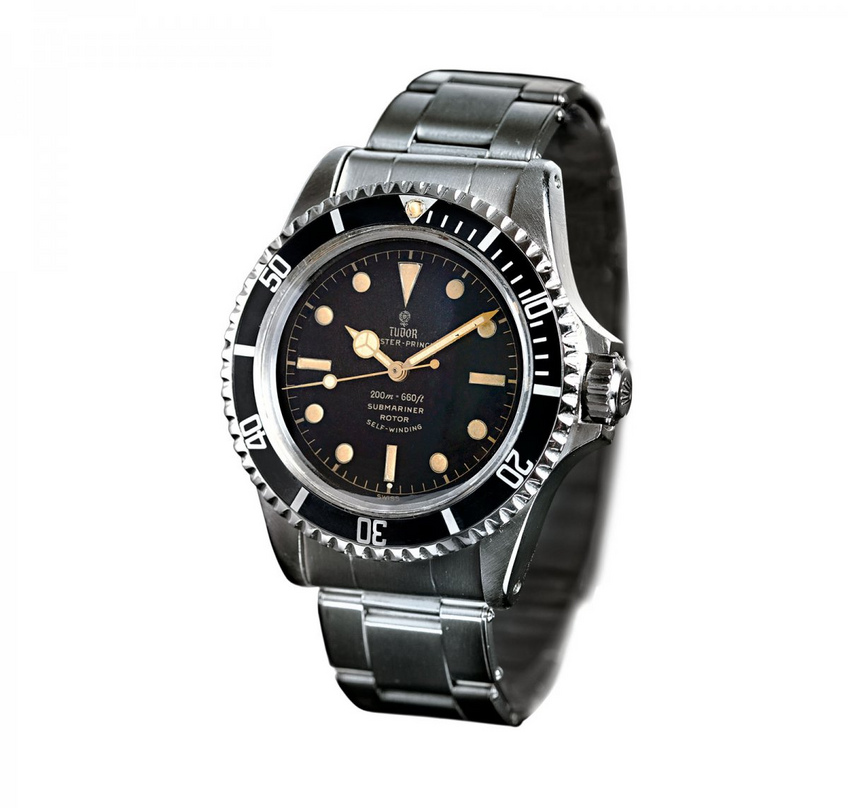
1969: a turning point
History will always remember 1969 to be the most eventful year in the 20th century since it changed the way younger generations saw the world following man’s conquest of the Moon.
During that year, Tudor reinterpreted the famous Tudor Oyster Prince Submariner. The new watch, given the reference number 7016, featured some differences made to the previous versions; its dial had square-shaped indexes and an hour-marker that was named “Snowflakes”. However, the most important change remained invisible to customers: the caliber 390 had been replaced by the caliber ETA 2883. It oscillated at the same 18,000 vibrations per hour and was housed in a 39-mm steel case. In parallel, in order to satisfy the requirements of a demanding clientele who had an abundant selection to choose from, Tudor introduced the Tudor Oyster Prince Submariner Ref. 7021 also in 1969. The watch was driven by the caliber ETA 2883 and featured an open worked aperture at 3 o’clock. It was obviously protected with a layer of Plexiglas decorated with a “Cyclope” magnifying glass. The new eye-catching series of timepieces was available with a steel strap referenced 7836.
The 1970s: the other side of watchmaking
In 1976, the brand released Ref. 9401/0, which was a modified version of the Tudor Oyster Prince Submariner.
Its new and distinguishing features were the optimized caliber ETA 2776, a blue dial and an aluminum-treated blue bezel. The watch became an icon in France from 1975, as the French Navy (“Marine Nationale” or M.N.) chose Tudor to equip its troops of combat divers. The Ref. 9401/0 was available in two straps; the first one had a classic clasp (Ref. 7836/0) whilst the second one (Ref. 9315/0) featured a Fliplock folding clasp with an extension so the watch could be worn on top of diving suits. A perfect tool in the field and a favorite of military men, it even featured the same square-tipped hands as in the 1969 version.
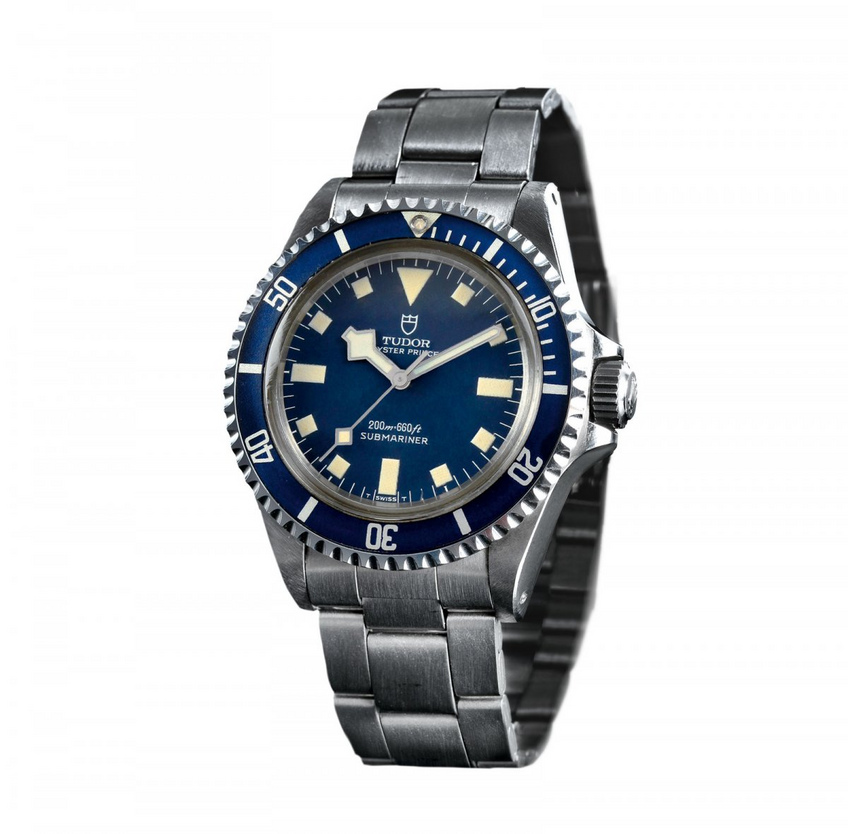
Evolution
The design of the Tudor Oyster Prince Submariner was perfect and thus it wasn’t substantially modified until 1989 when Ref. 79090 made its debut and models without a date disappeared. At the time, the watch was available with both a black or blue dial and bezel and featured a 39-mm steel case that was water resistant to 200 meters, following the tradition for this piece.
Its Ref. 9315/0 steel strap closed with a Fliplock folding clasp. Nevertheless, since change is crucial to keep up with market trends, Tudor released Ref. 79190 in 1995; a newer version of the Prince Date Submariner. Its case was water resistant to 200 meters and the watch bore no distinct changes except for a sapphire glass equipped with the famous “Cyclope” magnifying glass and an Oyster strap with Tudor’s initials. This was the last version ever made of the model, which went out of production.
The legacy of a rich series of icons
Launched in 2012, Tudor’s Heritage Black Bay capitalized on past references. In order to give the piece some personality, its aesthetics was reinterpreted. Yet, the Black Bay resembled historical models significantly in order to remind us of past icons. Proof that the model was a success on the market is the fact that it won the award for the best “Revival” product at the famous “Grand Prix d’Horlogerie de Genève” in 2013. This encouraged the brand to introduce a new version in 2014 with a blue unidirectional turning bezel. This version, which is still indirectly associated to the Submariner, is closer to what aficionados of “vintage” pieces like because it is a clear reference to the famous Tudor Oyster Prince Submariner, of which it is the claimed heir.
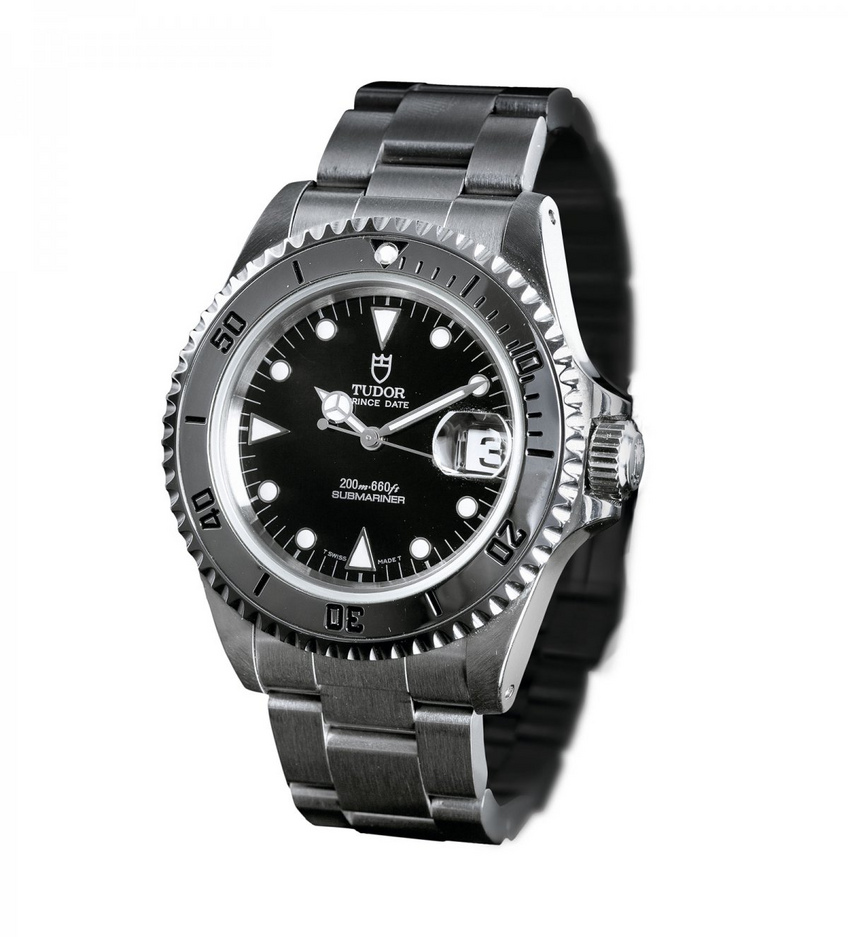
Today, the watch is almost seen as a historical digest so much so it is not only imbued with the same general look of the Tudor Submariner but it also features its same dial design, domed sapphire glass and martial hands. However, it needs to be noted that its aesthetics is decidedly contemporary and that it is equipped with a 41-mm steel case instead of the 39-mm cases most versions had. It is water resistant to 200 meters and it is driven by the same robust Swiss-made heart as the Oyster Prince Submariner pieces from 1969: the self-winding caliber ETA. It is also available with steel, old leather or fabric straps that come attached to the piece when it is bought.
Militaria
The Tudor Oyster Prince Submarine timepieces are seen as solid and affordable and their water resistance is widely acknowledged. Both the US and the French Navy (M.N) as well as other military organizations around the world really appreciate these pieces as they are deemed to meet their requirements. The legend associated to the pieces makes them fascinating and they have unsurprisingly conquered the hearts of many collectors.
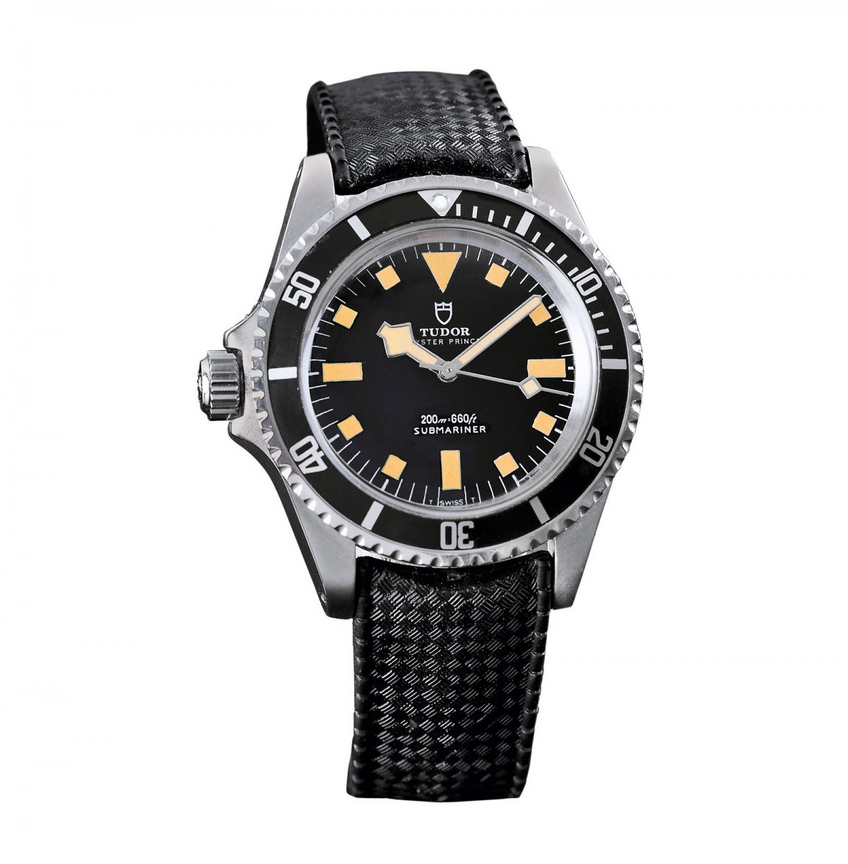
For the record, the US Navy has used Ref. 7928 Tudor Oyster Prince Submariner timepieces since the early 1960s. The French Navy (M.N.) used Tudor diving watches from the late 1950s and up to the 1990s. Until the first pieces of the 7016 series were produced, only black bezels were available but after that, all Ref. 9401 were also available with blue dials and bezels. The brand had to see to it that the original military engravings had a full stop after each of the letters “M.N.”, except for the pieces distributed in 1978. Other than that, the pieces had to have the year the pieces were released in engraved too, either next to the initials or under them, depending on the year (for example, M.N.77).
TUDOR : THE STORY OF A VISION







